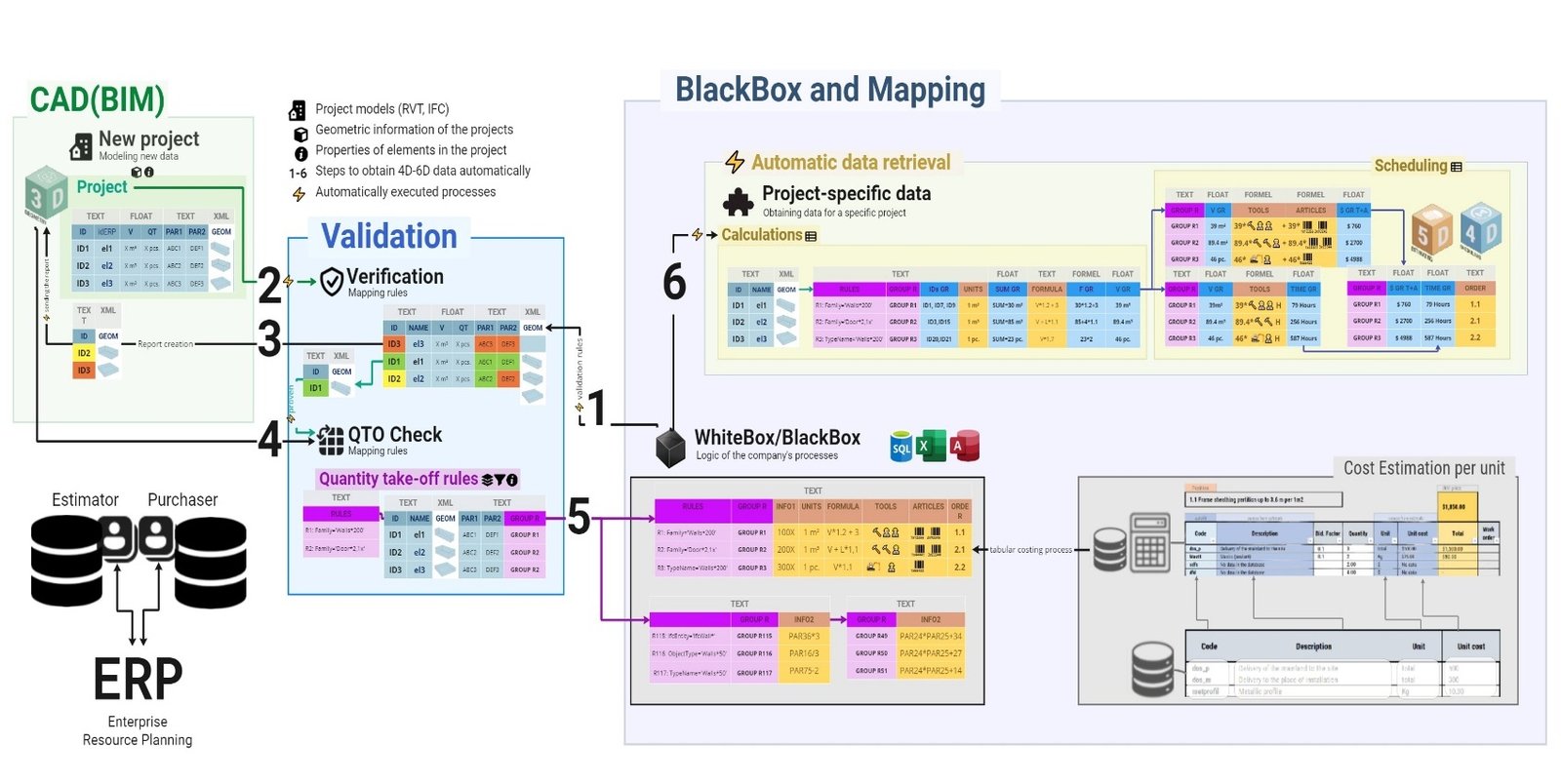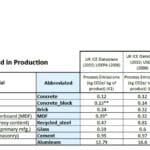Modular ERP systems integrate various attribute (information) layers and data flows into a single comprehensive system, allowing project managers to manage resources, finances, logistics and other aspects of a project in a synchronized manner within a single platform. A construction ERP system acts as the “brain” of construction projects, simplifying repetitive processes through automation, providing transparency and control throughout the construction process.
Construction ERP -systems (Enterprise Resource Planning) are comprehensive software solutions designed to manage and optimize various aspects of the construction process. At the core of construction ERP systems are modules for managing costing and scheduling, making them an important tool for efficient resource planning.
ERP modules -systems allow users to enter, process and analyze data in a structured manner covering various aspects of a project, which may include material and labor cost accounting, equipment utilization, logistics management, human resources, contacts and other construction activities.
One of the functional blocks of the system is the module of business logic automation – BlackBox/WhiteBox, which plays the role of the process control center.
BlackBox /WhiteBox allows professionals using an ERP -system to flexibly manage, via access rights, various aspects of the business that have already been pre-configured by other users or administrators. In the context of ERP systems, the terms BlackBox and WhiteBox refer to the levels of transparency and controllability of the system’s internal logic:
- BlackBox (“black box”) – the user interacts with the system through the interface, without access to the internal logic of process execution. The system performs calculations on its own, based on predefined rules hidden from the end user. He enters data and gets the result without knowing what attributes or coefficients were used inside.
- WhiteBox (“white box”) – process logic is available for viewing, customization and modification. Advanced users, administrators or integrators can manually define data processing algorithms, calculation rules and interaction scenarios between project entities.

An example is where an experienced user or administrator sets a rule: which attributes in an estimate should be multiplied among themselves or grouped by a certain attribute, and where the final result should be recorded. Later, less trained professionals, such as estimating engineers, simply load new data into the ERP through the user interface – and get ready estimates, schedules or specifications without having to write code or understand the technical details of the logic.
In the previous chapters, the calculation and logic modules were discussed in the context of LLM interactions. In an ERP environment, such calculations and transformations take place inside modules hidden behind an interface of buttons and forms.
In the following example (Fig. 5.4-1), the administrator of the ERP -system in the BlackBox /WhiteBox module has defined rules for matching attributes of entities from estimates with attributes for grouping QTO. Thanks to this customized (by manager or administrator) BlackBox/WhiteBox module, the user (estimator or engineer), by manually adding a quantity or volume attribute through the ERP user interface, automatically receives the finished estimates and work schedules. In this way, the calculation and estimate generation processes discussed in the previous chapters with the help of code, inside the ERP, becoming a semi-automated conveyor.
Connecting this semi-automated process to the volumetric attributes from CAD (BIM) models (Fig. 4.1-13), through, for example, loading the CAD project into a preconfigured ERP module, turns the data flow into a synchronized mechanism capable of autonomously and instantly updating the value of individual groups of elements or the entire project in response to any changes in it during the design phase, when loading the CAD model into the ERP.
In order to create an automated data flow (Fig. 5.4-2) between CAD (BIM) and ERP systems, the basic processes and requirements for data from CAD (BIM) model databases must be defined in a structured way, as we have already discussed in the chapter above “Requirements and Data Quality Assurance “. This process in ERP is divided into similar steps:
- Creating validation rules (1), which play an important role in ensuring the accuracy of the data entering the ERP -system. Validation rules serve as filters that validate entities and their attributes, allowing only those items that pass the requirements to enter the system. Learn more about verification and validation in the chapter “Creating requirements and validating data quality “.
- A verification process (2) then takes place inside ERP, which confirms that all project entity elements with their attributes and values have been created correctly and are ready for the next processing steps.
- If there are problems with incomplete attribute data, a report (3) is generated and the project, along with instructions for correction, is sent for revision until ready for the next iteration.
- Once the project data has been validated and verified, it is used in another ERP module (4) to create Quantity Take-Off tables (QTO) that create quantity attributes for entity groups, materials and resources according to previously generated rules (WhiteBox/BlackBox).
- Grouped data by matching rules or QTO are automatically integrated with calculations (e.g., cost and time) (5).
- In the last step of the ERP -system, the user, by multiplying the scope attributes from the QTO table with the attributes of the process tables (e.g., estimated items), automatically generates calculation results (6) (e.g., cost estimates, work schedules, or CO₂ emissions) for each entity group and for the project as a whole.

In a modular ERP -system, processes are integrated using software that includes a user interface. Behind the interface is the back-end, where structured tables process data by performing various operations that the manager or administrator has pre-configured. As a result, the user, thanks to the pre-defined and customized automation logic (in the modules BlackBox /WhiteBox), receives semi-automatically prepared documents that meet his tasks


Similarly, the processes in ERP -systems, from inception to final calculation (steps 1-6 Fig. 5.4-3) are a chain of interrelated steps that ultimately provide transparency, efficiency, and accuracy in planning.
Modern construction ERP -systems include not only cost and schedule calculation modules, but also dozens of other pre-configured modules, usually covering document management, project progress tracking, contract management, supply chain and logistics, as well as integration with other business systems and platforms. The integrated analytical tools of ERP allow users to automate the creation of dashboards to monitor project KPIs (KPI – key performance indicators). This provides centralized and consistent management of all aspects of a construction project, with an attempt to integrate a large number of applications and systems on a single platform.
In the future, ERP-analytics will be used in combination with machine learning to improve accuracy and optimize the process of calculating future project attributes. The data and attributes analyzed and collected from ERP systems in Big Data (Fig. 5.4-4) will in the future form the basis for creating predictive models that can accurately anticipate potential delays, risks or, for example, possible changes in material costs.
As an alternative to ERP, the construction industry often uses PMIS (Project Management Information System), a project management system designed for detailed control of tasks at the level of an individual construction project.


















